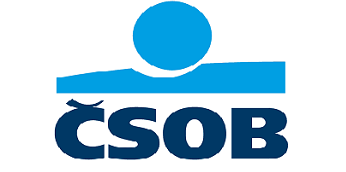
When you look at the journey of successful companies like Apple, Microsoft, Windows or recently launched startups like Zomato, Ola Cabs, and Paytm, it is clear that innovation helps these companies stand out.
But businesses don’t always stick to their original brands. For instance, Google changed its name from Google Inc. in 2017, Zomato rebranded its logo thrice in 2015, while Dunkin’ Donuts changed its name to Dunkin’. Rebranding has strategic business reasons. It aims at building an effective branding strategy – one that resonates with the needs of the customers throughout all phases of the buyer journey.
If your company is looking at devising a brand launch strategy or a rebrand, you want to ensure that the change goes over without a hitch. You want to develop a solid foundation through a branding strategy that highlights your understanding of the customers’ needs and desires, and in some cases, anticipate their demand – even before they do.
So, what do you do to leverage your existing customers for a successful rebrand? Here’s a comprehensive 5-step brand launch checklist that you must follow for your new branding or rebranding efforts:
1. Decide a Launch Day
When you know that you’re going to rebrand, set a date for the launch. This date should be at least 60 days in the future. There’s a lot of planning and preparation that you need to do in partnership with your brand strategy agency, and you must have the required time in hand.
Before you fix a date for the Launch Day, here are some things to keep in mind:
- Don’t choose the weekends and holidays.
- Analyze your website traffic to determine the 48-hour period with historic highest average traffic.
- Schedule an event, conference, or promotion on the launch date. Organizing an event will help to increase traffic and awareness, making the process of a brand shift simple and fast.
2. Prepare a Schedule
Plan out all the steps you need to take before Launch Day. Remember that this is a full and exhaustive brand launch, and you must look at all the areas where your brand is visible. Know how you will update each aspect and write down every single item in your to-do-list. Some of the items to include in your brand launch checklist are:
- Add new logo on the website
- Replace all brand mentions on the website
- Update Google business listing
- Update company profiles on all social media platforms, partner sites, referral sites
- Prepare logo format as per the requirements of different platforms
- Send out emails to prospects and existing customers announcing the rebranding
- Design transitional brand
This list is just a sample, and the actual one will include many more items. Make sure you add a column for Days Out from Launch to indicate when you need to complete the mentioned task.
Building a schedule in advance helps you to stay ahead of changes, plan the brand message well in advance and inform every team or department about what they need to do. You will obviously make additions to the list as you reach closer to the Launch Day.
3. Understand your target audience
A successful brand launch strategy must focus on the target audience. While your company’s mission is essential, it is the customers’ perception that defines the brand. What’s more, customers will determine if your company will stay for a year or two, or it will continue to exist for decades in the future.
Take inputs from research to gain a deeper understanding of your target audience. There are chances that the target audience you have identified is not the ideal fit. Moreover, your efforts may be more result-driven if you broaden or narrow the parameters of your target audience. Focus your branding strategy on a particular set of the target audience – the ones who will be excited about your offering.
Also, make sure that your research and marketing team continually learns about the customers. Their needs, challenges, and preferences tend to change and evolve with time. Know how you can accommodate these changes with branded content. Customers feel delighted when you present personalized content reflecting that you are attentive to their needs and wants.
4. Develop your brand’s value proposition
Once you have finished researching your customers, create your company’s value proposition. Clearly state why your prospective customers should choose you instead of the competitors. Some of the questions that you need to address are as follows:
- What are the needs and challenges of the customers?
- What are the solutions you are offering?
- How will your solution benefit the customers?
- How can you delight customers with your services?
- What sets you apart from the competition?
Spend some time gathering answers to these questions. Avoid presenting responses like faster, cheaper, more affordable, and better. Prepare more detailed responses that reflect your brand messaging, including the introductory speech your sales representatives can use to convey your company’s mission and offering to the customers. The answers also lay the foundation for your content strategy.
5. Create your core message
Knowing how your brand is different from the others in the industry is crucial as it assists in building a convincing case for why customers should choose your company. Invest time evaluating your company’s goal, objective, mission, and vision. Moreover, understand the reason for your company’s existence and its entry into the market. Gather more information apart from what you’re selling.
Brainstorm with employees to get more insights about the core values and intent of your company. Be specific when you establish the core messaging. Discuss with a brand strategy company to determine if the messaging matches what customers are seeking as a solution to solve their problems. A clear understanding of your audience and your company’s mission will help to develop the foundation of your messaging.
Conclusion
Great branding showcases the strength of your company and its role in the lives of the customers. A branding or rebranding launch strategy must be managed regularly to encourage brand loyalty and maintain consistency. Ensure that all employees follow the updated brand guidelines. They must be aware of the new visual assets like font and logo, and the content structure for messaging and brand tone.
For more tips to build your brand, check out the infographic below!
Infographic provided by Ansafone, a business process outsourcing services company

 Growing Small Businesses with Virtual Assistant Services
Growing Small Businesses with Virtual Assistant Services  How to Find the Right Engagement Ring Style for You at Lily Arkwright
How to Find the Right Engagement Ring Style for You at Lily Arkwright  Why Businesses Worldwide Prefer to Hire Web Developers from India
Why Businesses Worldwide Prefer to Hire Web Developers from India  How The Sherpas Made My Everest Base Camp Trek One Of The Most Inspiring Journeys Of My Life
How The Sherpas Made My Everest Base Camp Trek One Of The Most Inspiring Journeys Of My Life 


